Shocks but no surprises for LISA Pathfinder
10 November 2008
LISA Pathfinder has successfully completed a series of tests devised to characterise the shocks that the spacecraft will experience at launcher separation and when the science and propulsion modules separate upon reaching the operational orbit at L1.Following the acoustic tests which took place at ESTEC in September the LISA Pathfinder modules were returned to a clean room in anticipation of the shock tests which were scheduled for late October.
These tests are devised to measure the shock level that the equipment will receive as a result of the firing of the pyrotechnic devices and subsequent opening of coupling clamps. Measurements are made to determine if the shock levels that propagate through the spacecraft remain below the levels that have been specified, at the beginning of the programme, for the various spacecraft constituents.
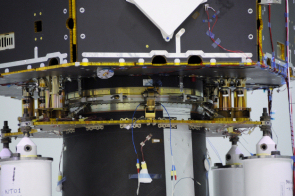 |
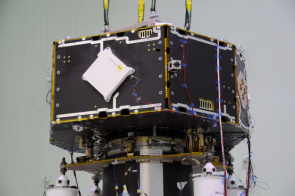 |
| Figure 1. The clamp which couples the science and propulsion modules (above left and right) has been designed and manufactured by SAAB. Credit: ESA | |
Separation of the science and propulsion modules
Two separate shock tests were performed. The first test, which took place on 23 October, measured the shock levels arising as a result of the separation of the science and propulsion module.
| Video 1. Test to measure shock levels upon separation of science and propulsion modules. (Click here for further details and larger versions of this video.) Credit: ESA |
When launched the science and propulsion modules are held together with a clamp band until they reach the operational orbit. At L1 the clamp is opened by firing two pyrotechnic devices and the modules separate so that the LISA Pathfinder science module can continue with drag-free operations. Since LISA Pathfinder houses a very delicate payload (the LISA Technology Package) the clamp that is used to couple the modules is a model which imparts a particularly low shock.
Separation tests with the launcher adapter
The second test, on 31 October, measured the shock imparted when the launch vehicle adapter separates from the spacecraft. For this test an exact replica of the adapter for the Rockot launcher, the backup launch vehicle for LISA Pathfinder, was used. These tests were performed with the support of personnel from EUROCKOT, KHRUNICHEV and CASA.
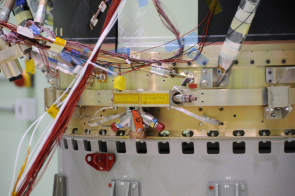 |
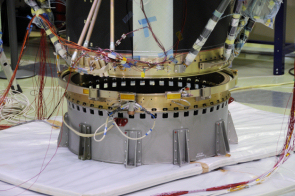 |
| Figure 2. The launch vehicle adapter with clamp closed (left) and open (right). Credit: ESA | |
| Video 2. Test to measure shock levels upon separation of the launch vehicle adapter from the science and propulsion modules. (Click here for further details and larger versions of this video.) Credit: ESA |
A similar test will be repeated at a later date for the Vega launcher - the baseline launch vehicle for LISA Pathfinder.
A successful outcome paves the way for the final mechanical test
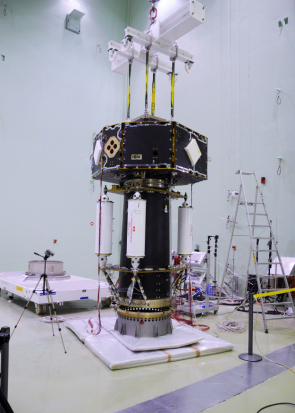 |
| Figure 3. The LISA Pathfinder spacecraft after the shock tests. The launch vehicle adapter lies on padded cushions after separating from the science and propulsion modules. Credit: ESA |
Preliminary results indicate a very successful outcome from these tests. The shock loads to the various elements of the spacecraft remained well within the required limits.
The propulsion module has now completed the series of tests that were to be performed at ESTEC and will be shipped back to Astrium Ltd., at Stevenage, UK, where it will undergo routine system checks before being transferred to IABG in Munich, Germany, for static tests.
The science module remains at ESTEC. Over the next few weeks some of the mass dummies that were used for the current series of tests will be replaced by other mass dummies with different properties. In December the science module will undergo sine-dwell static tests which are used to verify the static properties of the spacecraft.
A structural model of the science module has been used in the tests to date. The flight model is scheduled to arrive at ESTEC in December when it too will be subjected to the sine-dwell tests. Upon completion of these static tests the mechanical verification process will be completed.






